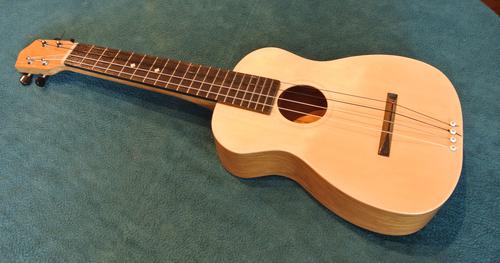
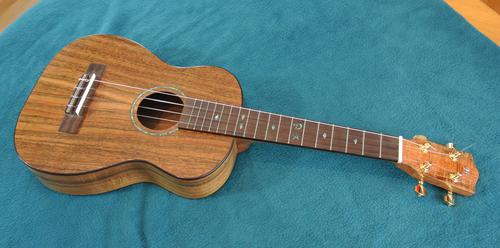
I think my instrument can hold its own in terms of sound, and I didn't think it looked too bad. But placed next to Pat's all koa ukulele, mine looked pretty shabby. But then again, Pat spent much more time, care, and money building that one than I did mine. Most of the time for my build actually went into experimenting, filming, photographing, video editing and writing. And I had no prior experience building stringed instruments.
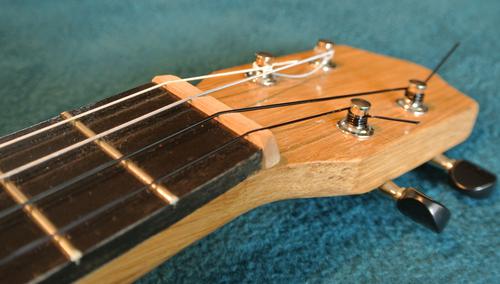
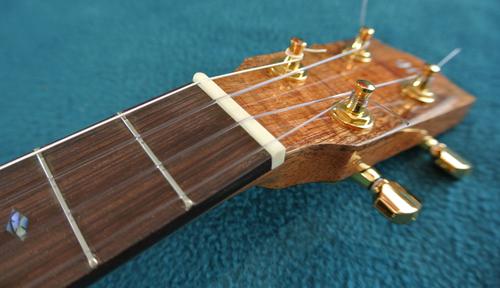
The nut on my instrument is just a piece of maple, only held on with the strings.
I set the action quite low on mine, so it's easy to finger cords. If you press the strings
onto the first fret, they are only a fraction of a millimeter above the second fret. So I figured
a fraction of a millimeter above the first fret should be sufficient.
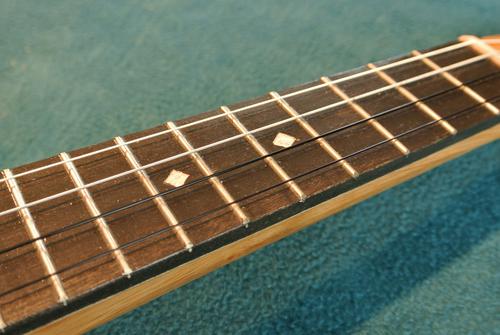
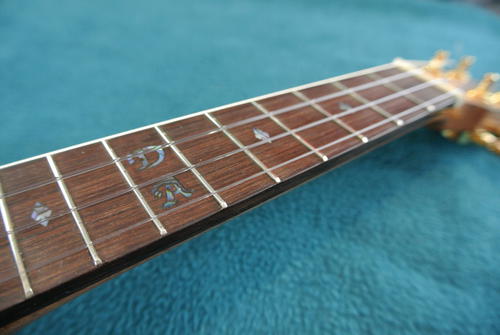
My fretboard is quite plain compared to the one Pat built. The two diamond shapes
were an afterthought. I just carved away the paint to reveal the light wood underneath.
I really don't need all the markings on my fretboard, or at least not at this point. Beginner
cords are all played very close to the head.
If you look very closely at the mother of pearl inlays on Pat's, you can see that he routed slightly outside the letter shape in places, though the stained epoxy hides that fairly well. But that's a minor imperfection, and the only imperfection I could spot on the whole instrument.
Pat and I have since been experimenting with using a pantograph to improve how the inlay cavities are carved.
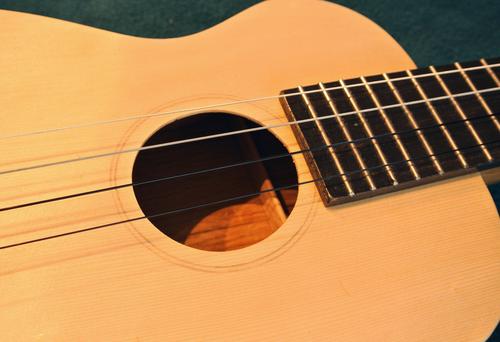
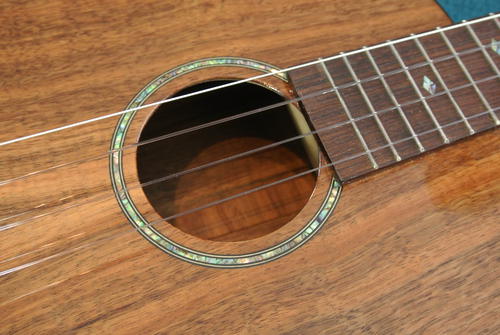
Penciled circles around the sound hole on mine, and a nice rosette on Pat's.
If I build another one, I'll be sure to pencil the circles a bit darker!
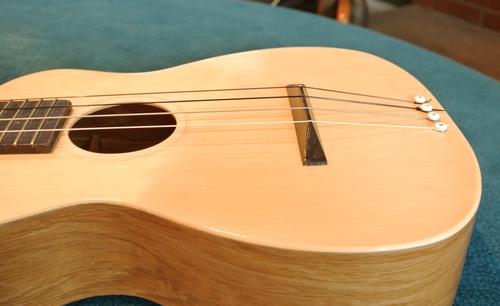
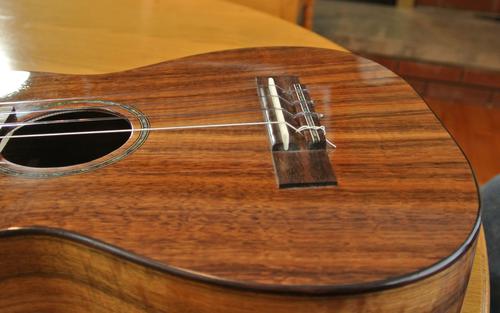
Floating bridge on mine, traditional bridge on Pat's. A traditional bridge definitely
looks better, but the floating bridge is easier to tweak. I think if I ever build another,
I might add a piece of wood to anchor the strings closer to the bridge, but keep the floating
bridge.
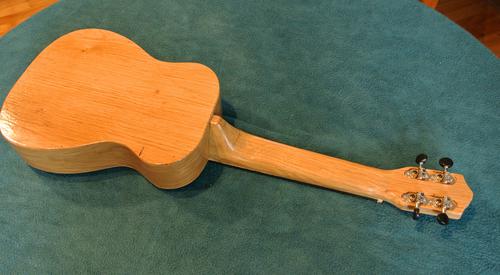
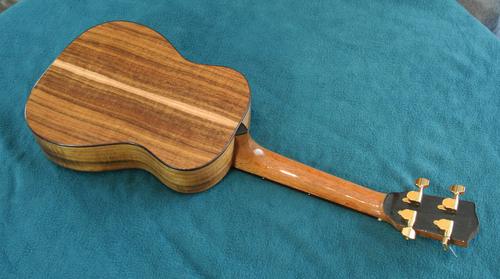
The backs of the instruments. Pat had some sapwood in the koa that he used, so he put that down
the center for a nice touch. My oak back has some genuine worm holes showing. I wanted to keep
with white oak, but the only scraps of white oak I had had worm holes in it. I guess that's
consistent with the rest of my build
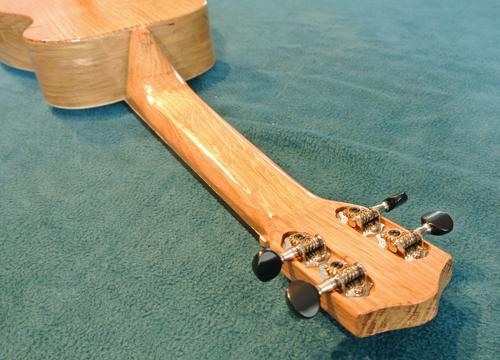
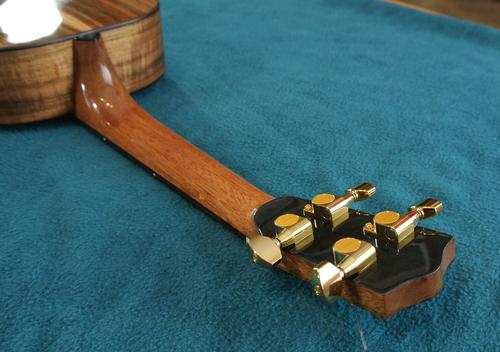
Pat put some ebony veneer on the back of the head, which really makes the tuning machines show
up nicely. Just the cheap tuning machines on mine, recessed into the head because the posts
were too short.
The neck on mine is quite a bit wider than a typical ukulele. I think that makes some cords easier to finger. When Lucas Haneman played some pieces on mine, the wider fret board wasn't a problem (it's still narrower than a guitar), but he found the less rounded neck hard to get used to. I should carve that back a bit. I didn't glue the fretboard onto the body, so taking the neck off is just a matter of undoing the nuts inside the body to remove the neck.
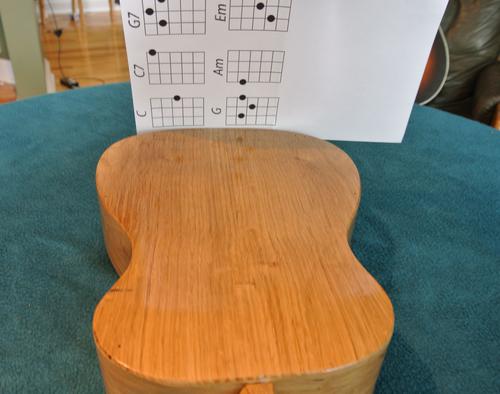
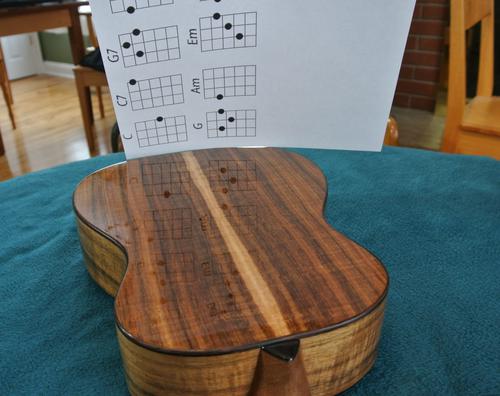
The smoothness of the finish on the one Pat built is just amazing. Mine has a gloss finish,
but it's far from being mirrored!
Back to the ukulele page.
![]()